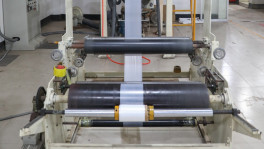A Snap in the Link
By the turn of the 19th century Lalmonirhat railway station emerged as an important railway centre. The Bengal Dooars Railway that was formed in 1891 as one of the pioneering railway companies in British India played the major role in the rising in prominence of Lalmonirhat, making it an important touch point. However, The Mogolhat rail lines today exist as an empty reminder of the bygone days
From the dense emerald forest emerges the loud huffing of a steam engine. Black smokes puff out above the trees and leave a trail of cotton-balls along the rail tracks through the Dooars forest. And then the long whistle blows.
There comes the Bengal Dooars Railway train on its long tenuous journey from Guwahati in Assam. It snakes through the rich Dooars forest, crisscrossing it many times before reaching Mogolhat in Lalmonirhat.
Coals burn in the firebox of the engine, and the long boiler chamber spews out the extra steam generated through overheating. But surely and certainly the train keeps coming.
The six massive wheels of the engine beat the wind ferociously to go up and down the undulating landscape of Assam.
Until it finally enters the plains of Mogolhat in Lalmonirhat.
Stones and timbers are unloaded. Good quality teaks from the Dooars forest – still not a protected area in the early part of the 20th century and mercilessly exploited. Dolomite, a kind of stone used in fertiliser, is transported on this track for the rest of India.
A whirl of activities start as goods are shifted on ox-carts. Passengers get down and more get in for further journey into Cooch Behar, Gitaldaha to be precise. Mogolhat is abuzz with activities.
By the turn of the 19th century Lalmonirhat railway station emerged as an important railway centre. The Bengal Dooars Railway that was formed in 1891 as one of the pioneering railway companies in British India played the major role in the rising in prominence of Lalmonirhat, making it an important touch point. The Bengal Dooars Railway that operated from 1893 to 1941 in Bengal province of British India constructed the lines to set up link from Assam to Gitaldaha via Lalmonirhat.
The British built a sprawling establishment in Lalmonirhat back in the early 20th century. Robust looking red buildings housed a training school for locomotive drivers, workshop to repair carriages and engines, a long string of quarters to house the railway staff.

Back in the British era, any government establishment of this size would mean economic activities, leading to clumping of population. That is what had happened to Mogolhat. The transit point served as a big push to its bygone growth story.
But then came the violent partition of India in 1947, splintering this massive land into three parts – India flanked on its two sides by East and West Pakistan. Suddenly a shared land got new political boundaries based on religion and yet the Dooars train would pass through Mogolhat.
After the partition, customs and immigration facilities were introduced for transportation in Mogolhat. People would visit India through this route until the India-Pakistan war of 1965.
There are so many railway establishments all over Lalmonirhat which reflects how developed railway communication was in the northern district. The main transport mode was train for the northern district people till the partition.
Economy was vibrant in this region as it was the main point for business communication between Assam and West Bengal via Lalmonirhat. The lives of local people were then India-centric.
That is until 1965 when India and Pakistan fought their second war since birth. The governments of the two countries decided to end the rail link.
Suddenly the establishments, the office buildings, the training centre, everything became useless and derelict. A town that has suddenly lost its relevance in the trading route.
Then came a flood in 1988. As massive cloud bursts happened over the Himalayas, waters came gushing down the Dharla River. The force was so great that it washed away the rail lines that ran across it into Cooch Behar.
The Mogolhat rail lines today remain curiously incomplete. The track ends nowhere at the edge of the Dharla River. An empty reminder of the bygone days when trains would roll over it in a complete continuation.
The rail tracks have now been taken over by the villagers. They have planted trees between the sleepers. The entire 10km rail line from Lalmonirhat to Mogolhat are occupied by locals. In many places people have made off with the iron tracks, selling them off as scraps.
The red buildings are crumbling and taken over by villagers who have lost their farmlands to river erosion. People stock hay on the tracks, tie their cattle to the bolts of the track fish plates.
An alive and thriving post on the border suddenly went into slumber, dead almost.

Only Abdur Razzak still remains and sometimes walks up and down the desolate tracks. A "way man" of the railway he was – somebody who would make sure that the tracks are free of any obstacles before the train arrives. The trains no more run, nevertheless, Razzak still gets paid by the railway to be stationed at Mogolhat.
Razzak, now 58, said he joined the railways in 1981 and saw transportation of both passenger and goods trains through Mogolhat point.
All the railway land here is now illegally occupied by local people, he said. The suspension of railway communication left the people disconnected with the city.
Remembering childhood memories, 60-year-old Karimon Begum said she would frequently visit India through this route even after Bangladesh's independence. She grew up in Mogolhat and is now living just behind the abandoned immigration office. There were nine office rooms for immigration; all but the main office room have been demolished, she said. "We used to come here for taking permission to go to India by the railway."
Now only a ruined semi-building room and a temple are all that remains.
The irony in all this is that, Lalmonirhat, once a hub of communication before partition, is one of the poorest areas in the country owing to its lack of communication with the capital. Agriculture is the main occupation in the region but farmers do not get the proper price for their produces because of the lack of transportation system. As a result, people are abandoning farming to become garment workers.
According to Bangladesh Bureau of Statistics, among the 10 poorest districts in the country, five are in Rangpur division - Kurigram, Rangpur, Dinajpur, Gaibandha and Lalmonirhat.

An intercity train of sufferings
After persistent demand, an intercity train named Lalmoni Express was introduced in 2004 from Dhaka. But it was not of much comfort to the commuters of the northern region because of the miserable condition of its passenger carriages and a timetable that was good on paper but never in reality.
The train is expected to take only 10 hours but passengers have to spend 14-15 hours for the travel as both departure and arrival are often delayed by two to three hours.
Moreover, the train could not run at its expected speed of 70km per hour because of weak engines and broken down carriages.
The travel becomes horrible during the Eid holidays.
Describing his experience, Joynal said he had travelled to Lalmonirhat from Dhaka by this train two days before Eid-ul-Fitr last year. He bought a ticket by lobbying with railway officials as it is another fight to get a ticket during Eid holidays. He came to the station on time for the scheduled 10pm train on the day. The train entered the station two hours late and thousands of home goers rushed to grab seats. People without tickets climbed up on the roof of the train. Every inch of the carriages was crammed.
The train groaning under the excessive load left the station at midnight. And the train collapsed at the airport station as one carriage broke down. The railway staff asked all the passengers on the roofs and inside the carriages to get off but nobody moved. After an hour, Railway Security Police went into action with batons to force passengers to get out of the carriages.
The damaged carriage was removed from the train and several hundred passengers had to cancel their journey. The train resumed its journey after 3am but just after crossing two stations it broke down again. This time two carriages were damaged. The railway staff started to remove the two damaged carriages. Again, several hundred passengers of the damaged carriages were left behind.
The train finally reached its destination at 5pm after 17 hours.
While this scenario is a common phenomenon during the Eids, the train is always delayed by at least an hour even at other times.

About the Lalmoni Express, a retired railway officer, who was in charge of this train, said on condition of anonymity that the state of this particular train is the worst with ramshackle carriages and low-power engines.
The Lalmoni Express runs on metre gauge line while almost all other rail lines in the railway west zone have been converted into dual gauge. On a metre gauge line, the train's maximum allowed speed is 70km per hour while on broad gauge lines it is 90km per hour. The carriages of the broad gauge line trains are wider than those of the meter gauge trains.
The Lalmoni Express also makes too many stops, way too high than the other intercity trains.
The retired railway official said most of the passengers of Lalmoni Express are lower class people like day-labourers, garment workers, or rickshaw-pullers. As a result, policymakers are not motivated enough to improve the train's condition.
Another reason for the train's continued poor condition is the bus owners, he said. After 1980s, the transportation mode changed because of rapid growth of inter-district roads.
People preferred to travel by road than the train because of the poor service by the railway. As road communication gained popularity, development of rail communication stopped.
People of the northern districts, however, still prefer to travel by train because of its low fare.
The Lalmoni Express has to cross an additional 200km to reach Dhaka from Lalmonirhat, connecting Santahar, Natore, Ishwardi and Ullahpara as there is no direct rail link for 60km from Bagura to Sirajganj.
The government has taken up a mega plan worth Tk553 thousand crore to set up a railway network throughout the country. The project of setting up 60km rail link from Bagura to Sirajganj was included in the mega plan. But northern districts were given little attention there. Mogolhat, it seems, will continue to decay for who knows how long.
 Keep updated, follow The Business Standard's Google news channel
Keep updated, follow The Business Standard's Google news channel















